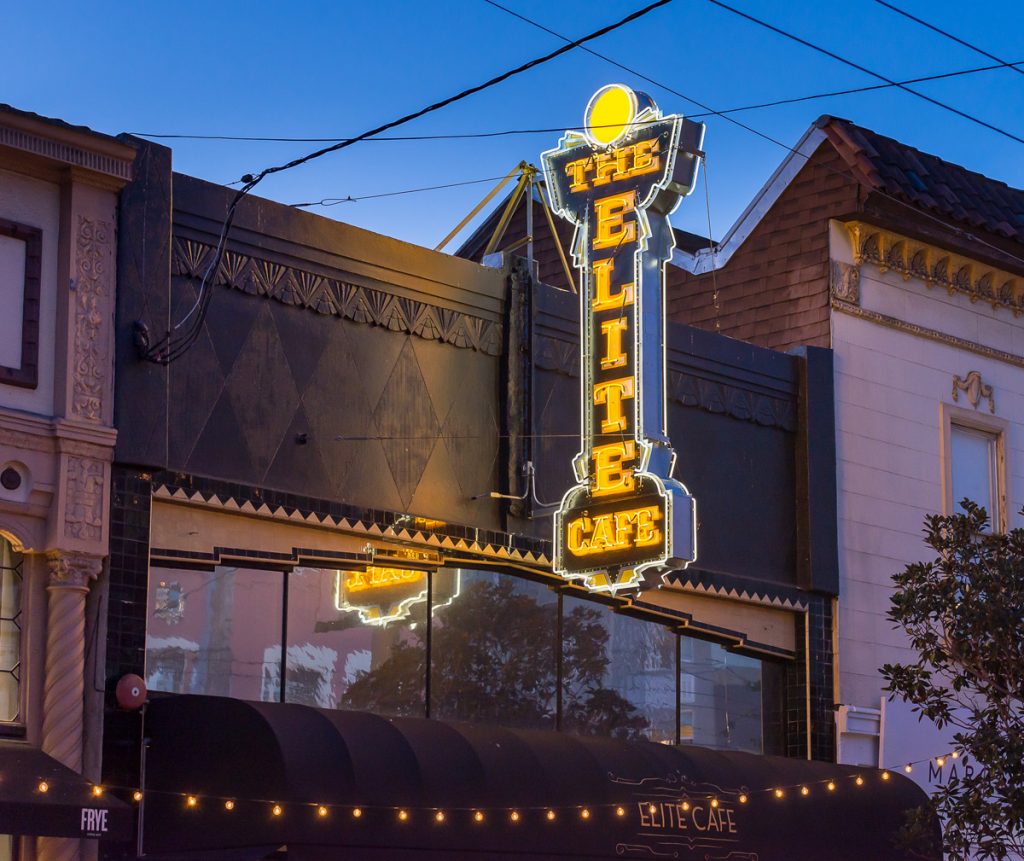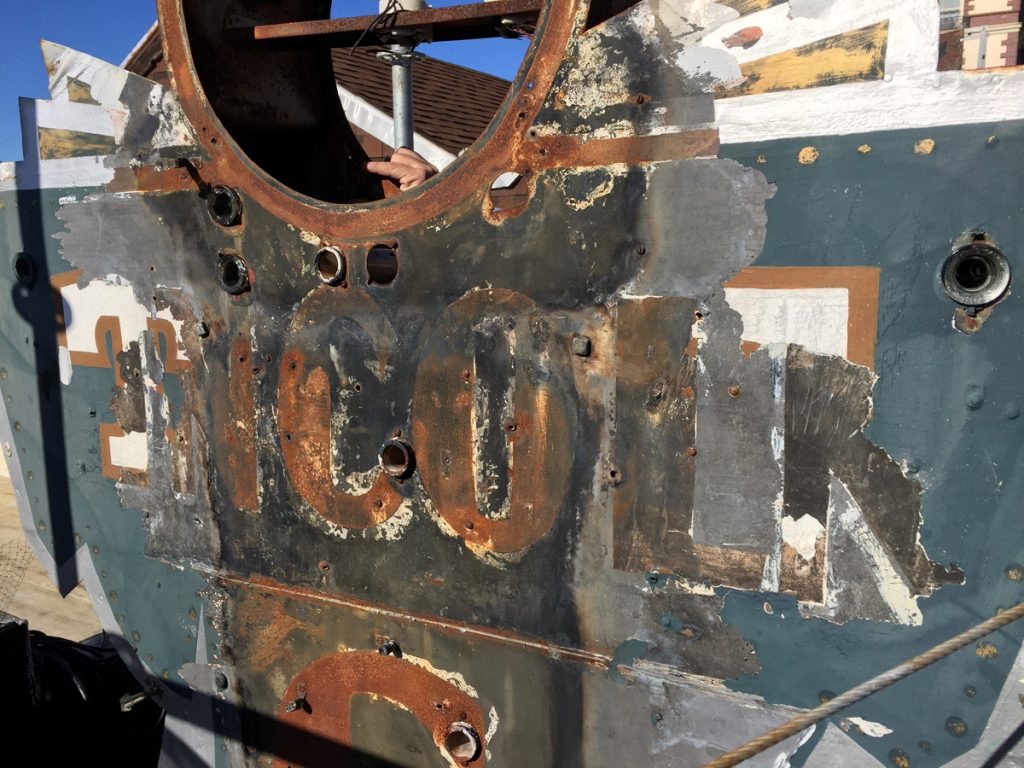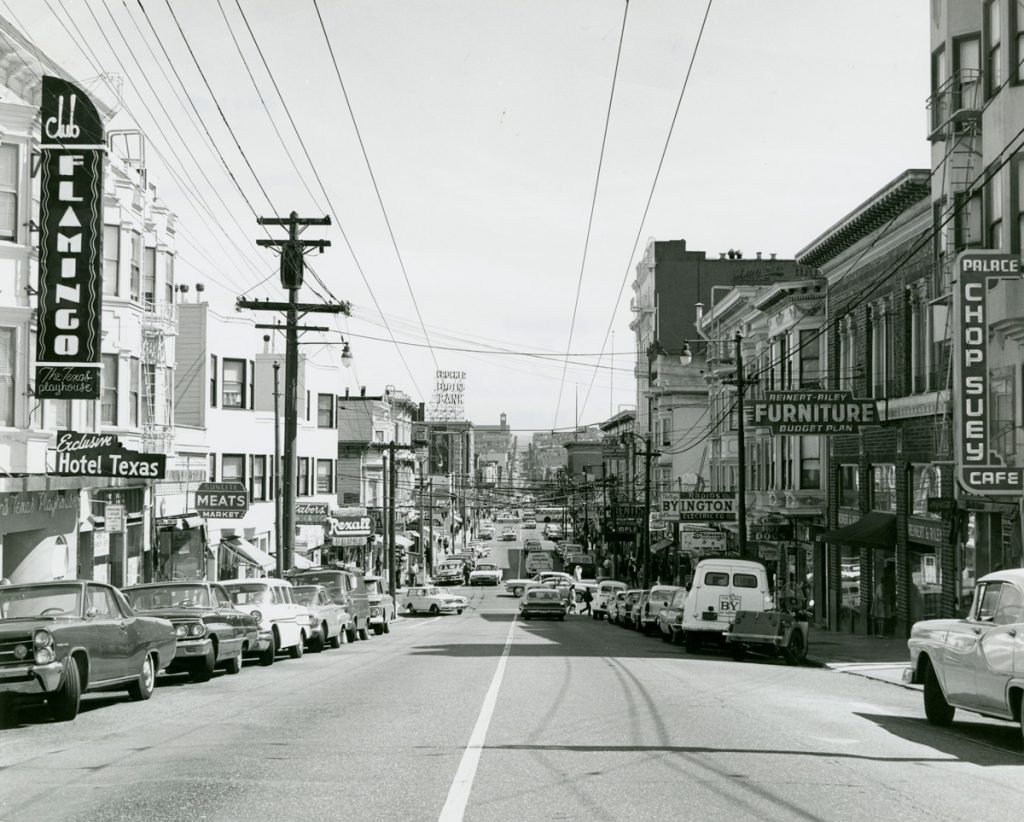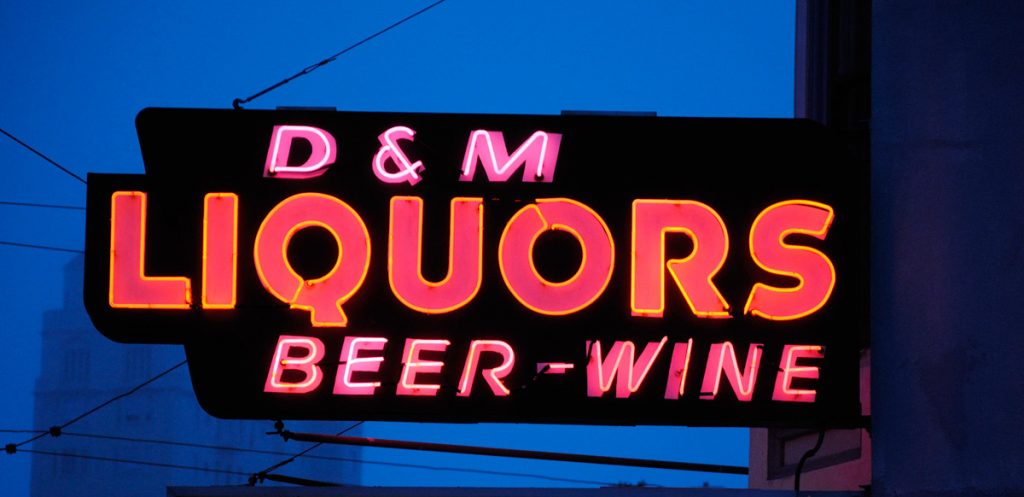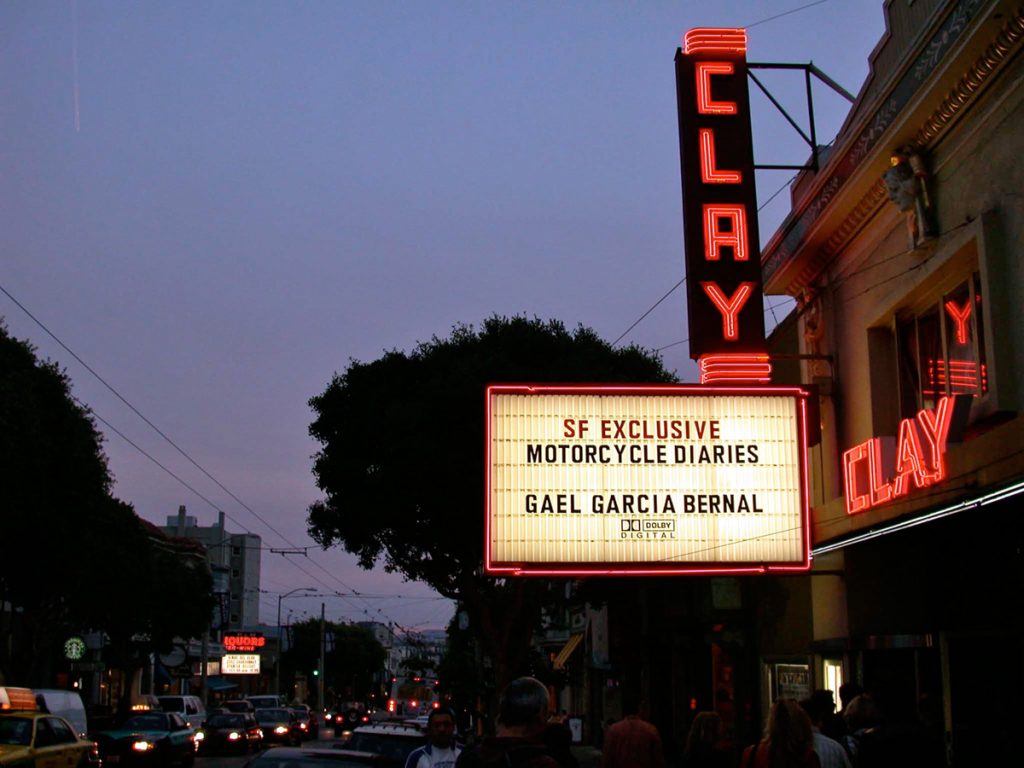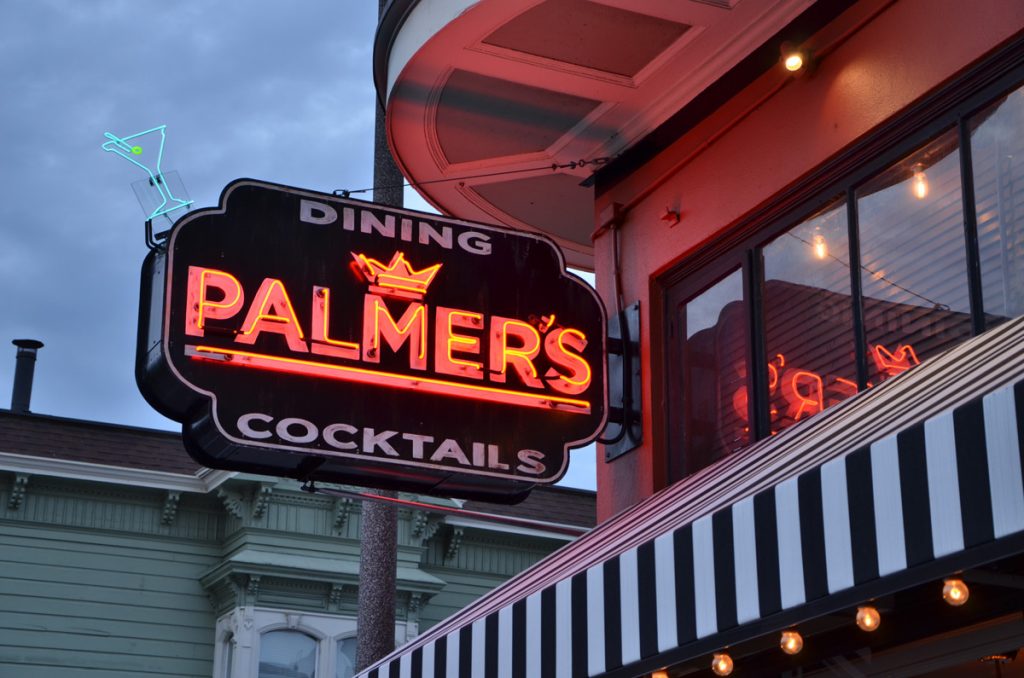By RANDALL ANN HOMAN
The sign for the Elite Cafe, glowing again after a fire left it damaged and dark for months, is a beacon from a time when Fillmore Street was awash with neon signs announcing the street’s vibrant nightlife.
Earlier this year, Jim Rizzo of Neon Works put up scaffolding and gave the Elite sign some long-needed restoration work. When he scraped back decades of paint, he uncovered a faint shadow of the former lettering. With a little sleuthing, it was easy to determine the name on the sign had advertised the Lincoln Grill from the 1930s to the 1950s. Then the business and sign changed to the Asia Grill. The third and final change came in 1981, when it became the Elite Cafe.
The fact that the Lincoln-Asia-Elite sign still exists is a minor miracle, considering how many neon signs that once dazzled visitors on Fillmore Street have now vanished. A photo from the San Francisco Public Library’s history room shows a view of Fillmore Street two blocks south of the Elite Cafe. Chop suey signs were ubiquitous in many neighborhoods, announcing the preferred late-night meal for tourists. The Palace Cafe survived into the 1970s beside Reinert-Riley Furniture; both buildings still stand on the west side of the 1800 block of Fillmore.
Dominating the foreground of the photograph is the Club Flamingo-Texas Playhouse neon vertical sign on the left, sporting classic Art Deco era letterforms. The Club Flamingo was one of a string of venues that were part of the vibrant music scene on the street. All of the signs in this photo have been lost to the dustbin of history, likely dismantled for scrap metal or removed during the redevelopment era.
The neon legacy on upper Fillmore still has its bright spots. The Elite Cafe sign is kept company by two other historic neon signs: D&M Liquors and the enduring Clay Theatre.
The Clay Theatre neon sign has been shining near the corner of Fillmore and Clay Streets since at least the 1940s. The Clay has weathered several changes in the design of its facade and at some point acquired a vertical blade that can be seen from blocks away.
Neon is making its comeback with new signs inspired by the authentic design style of last century. People call them all neon signs, even if the tubes are sometimes filled with argon gas. Fillmore Street has a neon gem in the relatively recent Palmer’s Tavern sign, complete with a neon crown and a blue neon cocktail glass. This sign would have fit right in next to the old Club Flamingo.
The 1950s were the heyday of neon tube signage. Even mom and pop stores could afford to purchase a neon sign and see their names up in lights. The surviving signs have become iconic to individual neighborhoods, representing the gathering places where generations of residents have met to watch movies, drink martinis, eat oysters and even park cars.
Fillmore Street contains only a few of the many historic neon treasures all over San Francisco. Learn more here.
Filed under: Art & Design




